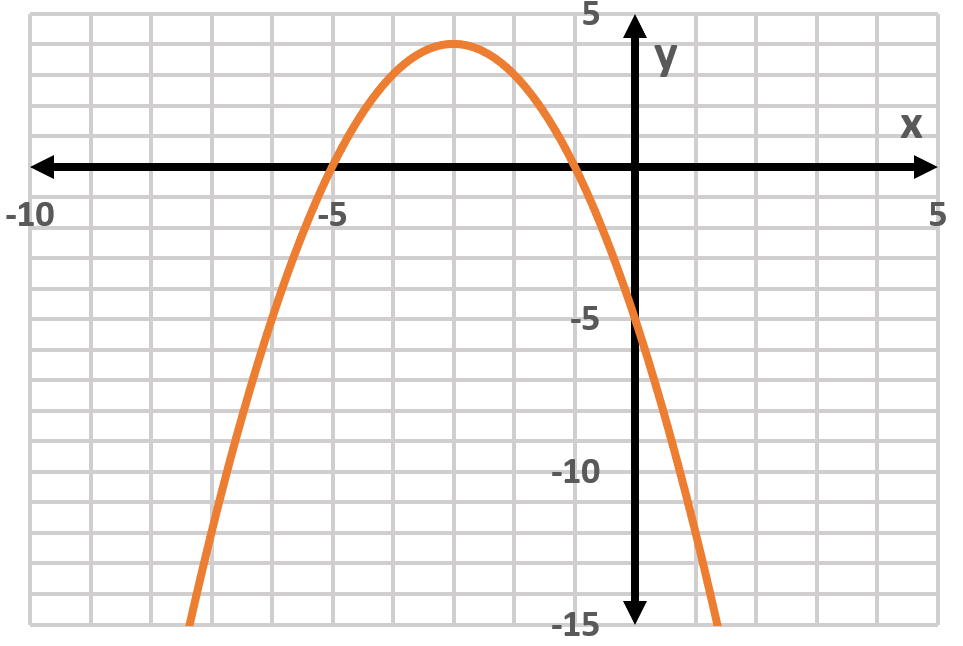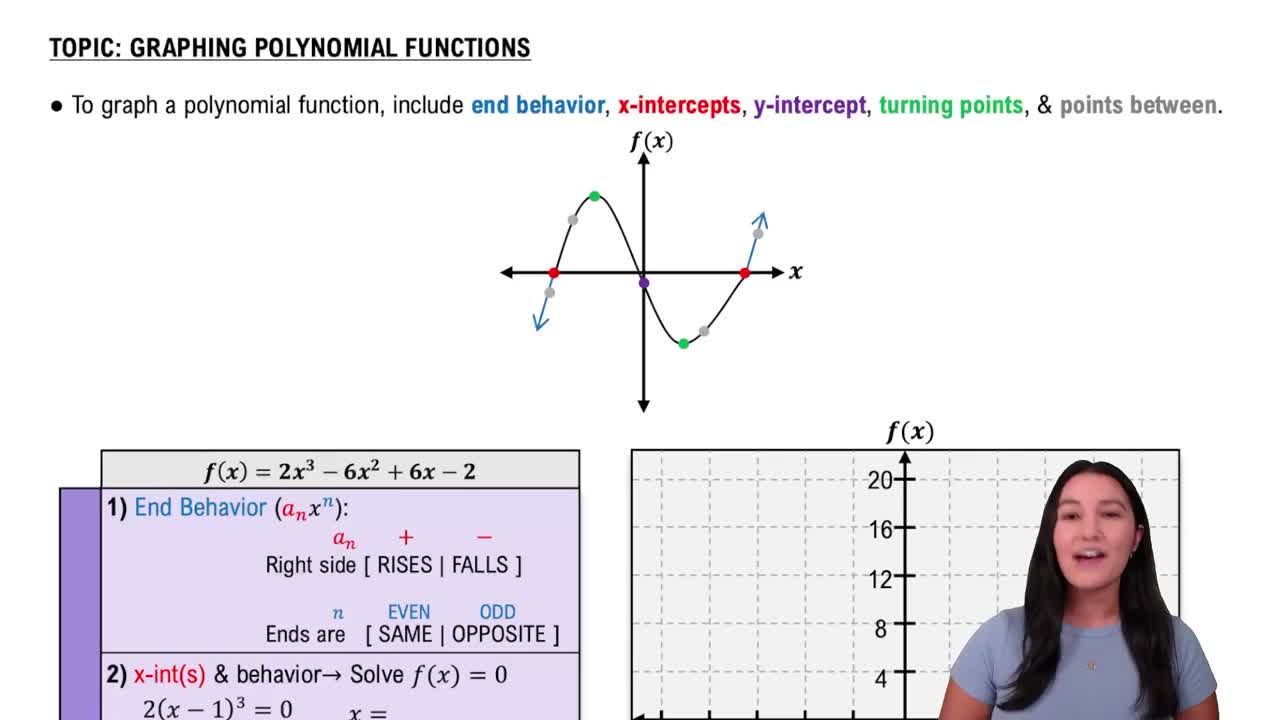Here are the essential concepts you must grasp in order to answer the question correctly.
Polynomial Functions
A polynomial function is a mathematical expression involving a sum of powers in one or more variables multiplied by coefficients. The general form is f(x) = a_n*x^n + a_(n-1)*x^(n-1) + ... + a_1*x + a_0, where n is a non-negative integer and a_n is not zero. These functions are continuous and smooth, meaning they do not have breaks, holes, or sharp corners in their graphs.
Recommended video:
Introduction to Polynomial Functions
Graph Characteristics of Polynomial Functions
The graphs of polynomial functions exhibit specific characteristics, such as being continuous and having a maximum number of turning points equal to n-1, where n is the degree of the polynomial. They can have a variety of shapes, including parabolas, but they will never cross the x-axis more times than their degree. Understanding these characteristics helps in identifying whether a given graph represents a polynomial function.
Recommended video:
Graphing Polynomial Functions
Identifying Non-Polynomial Functions
Non-polynomial functions can include rational functions, exponential functions, logarithmic functions, and trigonometric functions, which may exhibit discontinuities, asymptotes, or oscillatory behavior. To identify non-polynomial graphs, one should look for features such as sharp corners, vertical asymptotes, or discontinuities, which are not present in polynomial functions. Recognizing these traits is essential for distinguishing between polynomial and non-polynomial graphs.
Recommended video:
Introduction to Polynomial Functions

 Verified step by step guidance
Verified step by step guidance Verified video answer for a similar problem:
Verified video answer for a similar problem:



 6:04m
6:04m